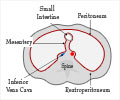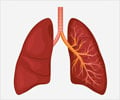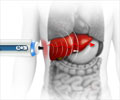Researchers from University of North Carolina at Chapel Hill have managed to isolate a cellular system responsible for degrading proteins in Cystic Fibrosis. Blocking this system allows some affected proteins to regain their shape and thus may herald in new treatments for the disease.
Cystic fibrosis (CF) is a fatal disease caused by a defective gene that produces a misshapen form of the protein cystic fibrosis transmembrane conductance regulator (CFTR). People with cystic fibrosis do not have enough CFTR for their cells to work normally because their bodies quickly destroy the mutant protein."Most cases of CF are caused by the inability of faulty CFTR to get in the correct shape, which leads cells to place it in the trash bin," said senior author Dr. Douglas Cyr, professor of cell and developmental biology at UNC School of Medicine. "Our research helps define the basic mechanism for CF and identify targets for the development of therapeutics designed to get CFTR into shape and allow it function normally in the lung," Cyr said.
The results, published Aug. 11, 2006, in the journal Cell, point to several possible targets for the development of new treatments aimed at stopping the disease, the researchers said.
Scientists have known for some time that treatment of cultured cells with compounds known as chemical chaperones can increase the fitness of misshaped CFTR and get it into proper shape. Thus, "If we can figure out how to get CFTR into the right shape, we can cure the disease," Cyr said.
To better understand how to fix CFTR, Cyr's research team at the UNC Cystic Fibrosis Pulmonary Research and Treatment Center focused on identifying the cellular system that disposes of faulty CFTR. The investigators identified cell components that specifically recognizes misshapen CFTR and drops it in the molecular trash bin. The team found that turning off these components – the cell's trash collectors -- extends the life of faulty CFTR proteins and thereby enables some of it to assume a functional shape.
The trash collectors newly identified by the Cyr group are two different ubiquitin ligases, proteins that specifically recognize misshaped regions of CFTR and tag them with a degradation signal known as ubiquitin. The ubiquitin tag tells the cell to destroy the marked CFTR, a process overseen by a destroyer called the proteasome. This trash system is known as the ubiquitin proteasome pathway.
Advertisement
"Understanding this pathway gives us greater insight into what's wrong with the protein -- information that will help people design better therapeutics for the disease," Cyr said.
Advertisement











